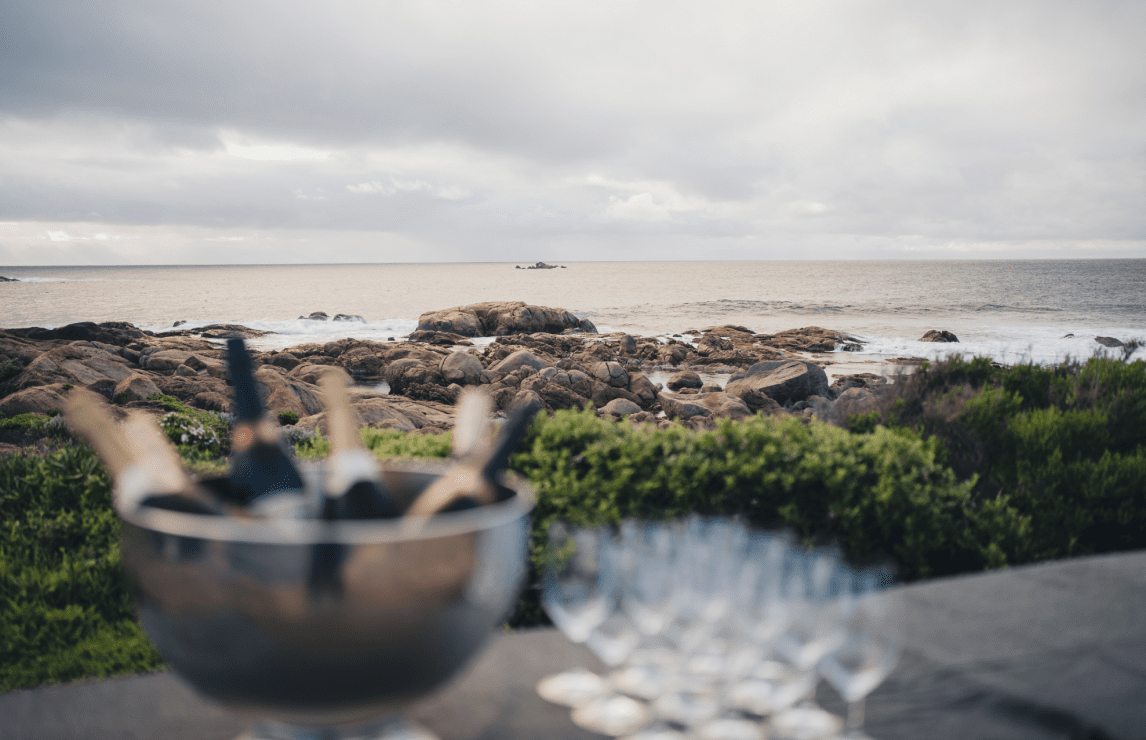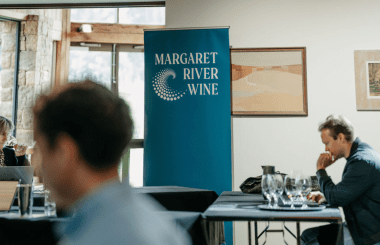Forging Its Own Path: the rise of Margaret River as a fine wine destination
Nestled in the remote southwestern corner of Australia, cradled between the Indian and Southern Oceans, Margaret River is one of the most geographically isolated wine regions in the world. This isolation played in its favour: this stunning stretch of land managed to preserve an almost untouched natural beauty and unique biodiversity. Beyond biodiversity, Margaret River has all it takes to grow healthy, high-quality grapes. Here, the Mediterranean climate with heavy winter rainfall, dry ripening season and cool sea breezes meets low-in-nutrient, ancient soils formed around 150-600 million years old granite bedrock.
With its impressive array of terroirs, Margaret River's ascent into the world of fine wines has been nothing short of remarkable. From the 1960s, when the region's first vines were planted, to the present day, where Margaret River's Cabernet Sauvignon and Chardonnay rival the best of Bordeaux and Burgundy, this region's journey is a testament to its potential.
Ahead of the recent IWSC judging, in partnership with Margaret River Wine Association, our international experts shared that they had high expectations of the region’s wines. These expectations were met, and in many cases, exceeded, said the judges during a panel discussion following the tasting.
“I personally have never given so many silvers and golds over the three days of judging,” revealed Freddy Bulmer, IWSC judge and Buyer for The Wine Society, one of UK’s oldest wine clubs.“This is a really genuine region, where people are genuinely trying to make the best wines that the climate and the place here can offer,” Freddy continued.
Out of over 250 entrants, more than 230 medals were awarded to the wines judged in Margaret River with Cabernet Sauvignon and Chardonnay reaffirming their status as the ‘king and queen’ of the region and gathering the majority of accolades. The judges were impressed with the consistency of these two grapes, as well as with their ability to capture the essence of this part of Australia.
Melania Battiston, IWSC judge and Beverage Manager at Aman Resorts, Peloponnese, Greece, highlighted: “The Chardonnays here always have this perfect balance between the reductive touch, and also a really skilful use of the oak, but without ever losing the fruit power.”
This distinctive balance of abundant fruitiness, lively acidity, a touch of oak, and elegant reductive notes in Margaret River Chardonnays is attributed to two main factors, according to the judges. One of these factors is the unique local Chardonnay clone, Gingin, while the other one is the careful winemaking approach of the local producers. After all, great wine is made in the vineyards and not manipulated too much in the winery, the judges reiterated.
Alistair Cooper MW, a member of the IWSC Judging Committee overseeing the Margaret River judging, commented: “I think, from what we’ve seen, the focus here is on the vineyards. We saw many producers who are organic or biodynamic, and that makes sense as they are blessed with a great climate here. Focusing on the health of the vineyard is the only way you can make great wine. It’s about seeing that the winery is an extension of the vineyard rather than a place where the wines are made.”
While acknowledging the diversity of Chardonnays they tasted, the judges noted that the signature Margaret River style consistently shone through: complex, elegant wines boasting both freshness and generous fruit, without falling into the trap of heavy, buttery wines.
“For the rest of Australia, Chardonnay has seen a real pendulum swing stylistically. First, it was really buttery, oaky, far too much ‘fat’. And then the pendulum swung to the anaemic spectrum, so the wines were lacking joy. It feels like Margaret River has to a degree kept itself to itself. It hasn't felt the need to go so far the other way to those really lean wines. Instead, they've said, we know what our style is here, we can hone it. And they've honed it really well,” said judge Freddy Bulmer.
Furthermore, both Chardonnay and Cabernet Sauvignon wines from Margaret River have the ability to reflect the vintages exceptionally well, noted the judges.
“This is one of the best, most blessed areas certainly in Australia where they haven't really had a bad vintage since 2006. Yet each vintage has its own distinct character, it's not homogenous in any way,” shared Alistair Cooper MW.
The judges admired Cabernet Sauvignon wines which showed lush fruit, ample freshness and well-integrated tannins. The local producers have mastered the art of extraction, said our experts who described Margaret River wines as ‘inviting’ and ‘cuddly’.
“There aren't so many other places in the world where Cabernet and Chardonnay grow so well together, in the same area,” said Freddy Bulmer. “But one thing that I think stylistically ties them together when they're done really well in this region, is a certain luxuriousness to the wine, but without ever being distasteful.They're not too showy, but they are the sort of wines that feel like a treat. You open a bottle of a great Margaret River Chardonnay or Cabernet and it feels so inviting, cuddly.”
Beth Pearce MW, IWSC judge and Buying Director at Lay & Weeler, one of Britain’s longest-standing fine wine merchants, echoed the same sentiment: “Balance is key because they get great fruit ripeness here, but it's always within this kind of great structure, with that nice freshness. It keeps the wine away from ever becoming jammy.”
What's more, the judges highlighted that Margaret River wines can readily compete with the finest offerings from Bordeaux and Burgundy while being available at a fraction of the price.
“If you're buying young vintage Bordeaux, let's face it, it isn’t much fun to be drinking it. It's tough. And the Cabernet Sauvignon wines you find here, with that beautiful, ripe fruit, yes, they are wines that can age, but they also drink very well when they're young,” revealed Alistair Cooper MW.
Speaking of the international market niche, the judges noted that while Australian wine regions are sometimes perceived collectively on the global level, Margaret River is gradually establishing its own identity.
“I think amongst those who know, Margaret River is quite rightly seen as a fine wine region, first and foremost. I think one challenge that Australia has, perhaps is, arguably the majority of UK consumers aren't really aware of different regions of the country. But Margaret River is doing a great job at carving out its own niche and becoming known as Margaret River. Amongst Wine Society members, it's a very popular choice, actually,” said Freddy Bulmer.
Beth Pearce MW concurred: “I think people understand that you can get world-class wines from Margaret River. And that relative to some other fine wine regions of the world, they remain really good value. We often hear from clients, that they that they've just discovered Western Australian wines, wines from Margaret River. I think it's almost like a bit of an insider secret at the moment in the fine wine world.”
The judges encouraged the producers who are exporting their wines to focus on Chardonnay and Cabernet Sauvignon as these two grapes are truly capable of showcasing the distinctive style of the region.
“My advice would be – don’t get too distracted. Don't get too caught up with the Shiraz and the Sauvignon Blanc. I totally see why it is done for the local market. But personally, as a buyer in the UK, it's not something I'm looking for, unless it's under 10 pounds, which is not really what this region is about. So think about the message, think about your unique selling point and just try and focus on it,” said Freddy Bulmer.
For producers who may not have performed as well in the tasting, the main advice is to prioritize the natural expression of the vineyards and the quality of the fruit, avoiding over-manipulation in the winery, said the judges. Additionally, consider refining your messaging and storytelling to communicate the region's strengths, such as its balance of traditional winemaking and innovation, as well as its reputation for producing age-worthy Chardonnay and Cabernet Sauvignon at competitive price points, the judges emphasised.
Lastly, taking part in international competitions is a great way to gain exposure and recognition for those who wish to grow their export, noted the judges.
“A lot of the UK buyers are judges in these competitions,” said judge Melania Battiston. “We are now ambassadors of this region after this trip. It is now our duty to communicate how refined these wines are, to try to source these incredible wines and put them on our lists and, in fact, to communicate and spread the word of Margaret River.”
Best Margaret River Wines 2023







